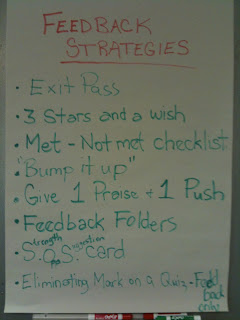For the week of August 15th - 19th a team of us from SE 1 headed up to Kempenfelt Bay Conference Centre for a week long "Math Campp" sponsored by the Ministry of Education.
The focus of the camp is on Proportional Reasoning and Algebraic Thinking. It was completely free and not only did we receive great PD, but also lodging, food and gas mileage.
Lucky for us, the 5 teachers (and one volunteer from Maryvale) were able to get into three of the 4 sessions that were available. Our teams were as follows: 3-6 session: Gwen (Dorset Park),Maria (Regent Heights), Melissa (Maryvale); 5-8 session: Myself; 7-10 session: Kermin (Regent Heights). So we were all able to learn a lot of different things, and then are all able to bring it back to our schools and our students.
The first two days were focused on Proportional Reasoning. Marian Small and Amy Lin presented the Plenary Sessions for this session. After each plenary session we went into our breakout sessions focused on our grade band. Here are a few of the comments about the first two days of our learning, from those that have attended:
3-6 Breakout Session Thoughts:
Maria @ Regent Heights said:
Just keep swimming…swimming…swimming…(Dorey – (Finding Nemo) was on to something)
That’s what we do in breakout sessions – deep swimming (choosing between a “multiplicative friendly” whale or an old “additive” sea creature.)
During our breakout sessions we:
• attempted and successfully solved mind-boggling math problems;
• discussed how and why we solve a certain problem – what strategies we used and what connections we made;
• asked questions;
• answered questions;
• overcome math fears / uncertainties;
• engaged in deep conversations regarding algebraic thinking and how beautiful mathematical patterns are;
• created learning goals & polished them;
• got amazed at a new multi-faceted resource
and…..networked with lots and lots of other lovely fish!
Melissa @ Maryvale said:
In the Grade 3-6 session, our room theme was “The Fishing Shack”. On the first day, we each received a fishing hat to represent our grade group. From then on, each time we left the class, our “exit ticket”, was a reflection we wrote on “fish note paper.” A fishing quote related to what we had learned that session about proportional reasoning or patterning and algebra guided our written reflection. We also got a trinket to add to our hat, for example, a piece of netting, a reel, hook, etc. The facilitators modelled a 3-part lesson approach each time we met, and we learned a variety of ways to do a minds on, action, and consolidation. For example:
Minds on: Four corners, Game – find your equivalent fraction, & inside and outside circle discussion with teacher guided prompts
Action: Parallel Task, Open Question, & Centres
Consolidation: Exit Card, Gallery Walk, & Bansho
Some “Ah ha” moments we had...
Peer Feedback: We watched a video of TDSB students using MAC books in a classroom to solve a problem. After the problem was solved, students were then told that they had to give their peers feedback on their answer. Each Mac book needed to have at least two pieces of feedback, which the students wrote on a post-it note and posted on the screen of the computer. After feedback was give, the teacher instructed the students to look at the feedback that they were given and see if they found the feedback to be valuable in assisting them to make their answer better. Students were told they could use or not use the feedback that was given to them.
Using a Variety of Materials: When we solved various fraction problems in our groups, it was interesting to see the different types of materials that people selected to use that aren’t the typical fraction strips or circle....such as, geo board and a ruler.
Growing Success: We talked about the value of the 3 types of assessment (of, as, and for) and the triangulation of ways to assess (observation, conversation, product). This was important because sometimes observation and anecdotal notes aren’t always seen as valuable in comparison to other forms of assessment, but with the growing success we can see how important it is.
Bansho: We received the monograph on the Bansho, and tried a Bansho in our group. We discussed the importance of having a guiding question or focus when having students share their work (e.g., why did you use two colours to show when you drew your pattern? What do the two colours represent?). We discussed how this is better than having students come up and say, ”First I did ...., then I...., etc”. We also discussed that not every student needs to share for a bansho. After one student shares, we can ask students with similar answer, ways of solving, etc to put up their work next to the shared question.
For the 5-8 session, You will have to ask me personally what we did :)
For the 7-10 Session
Kermin @ Regent Heights said:
Our group is focused on providing feedback to students. We have brainstormed methods to provide frequent feedback to students with limited investment of time such as exit cards, confidence lines, etc. As well, we are looking at samples of student work and discussing possible responses to advance thinking and understanding.
Along with that we’ve been trying out open-ended problems in an effort to anticipate student responses. For instance, using linking cubes in a ratio of two colours we build animals. My creation, Shelly the turtle was made in a ration of 1:2 (green:yellow).
 |
| Our Group From South East 1 and Marian Small |
Stay Tuned for Updates from Day 3 & Day 4!!!












